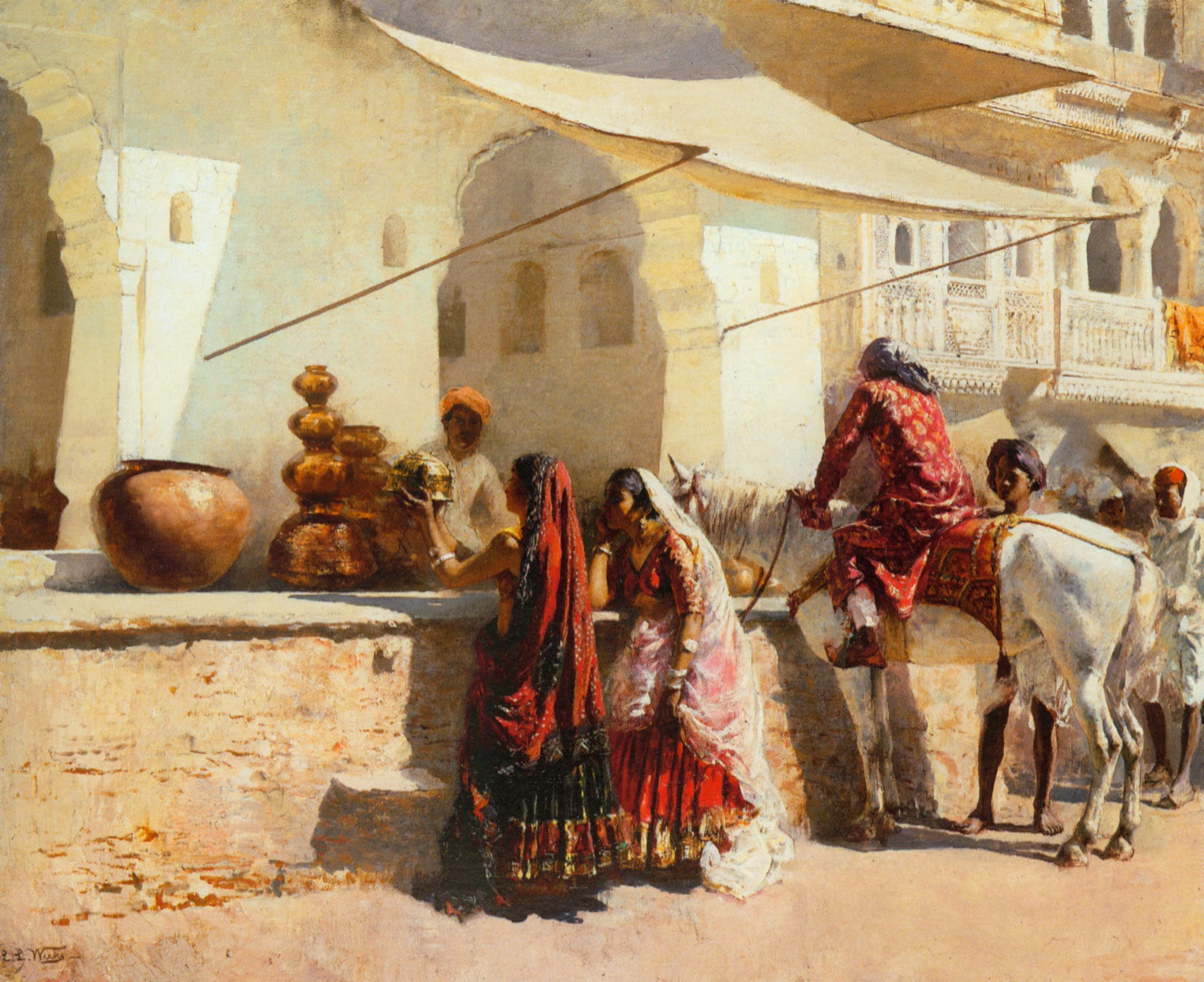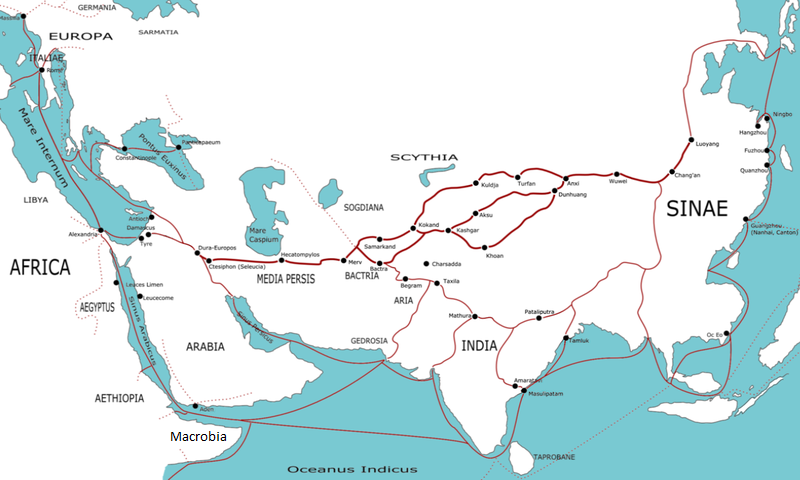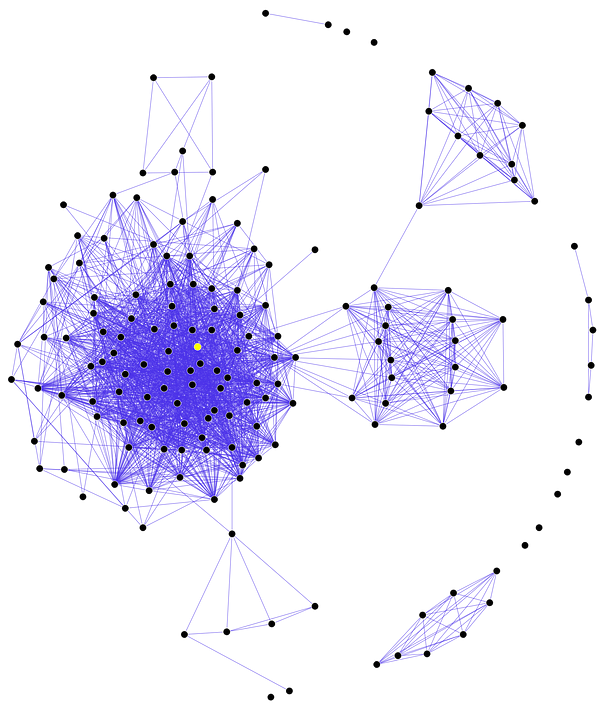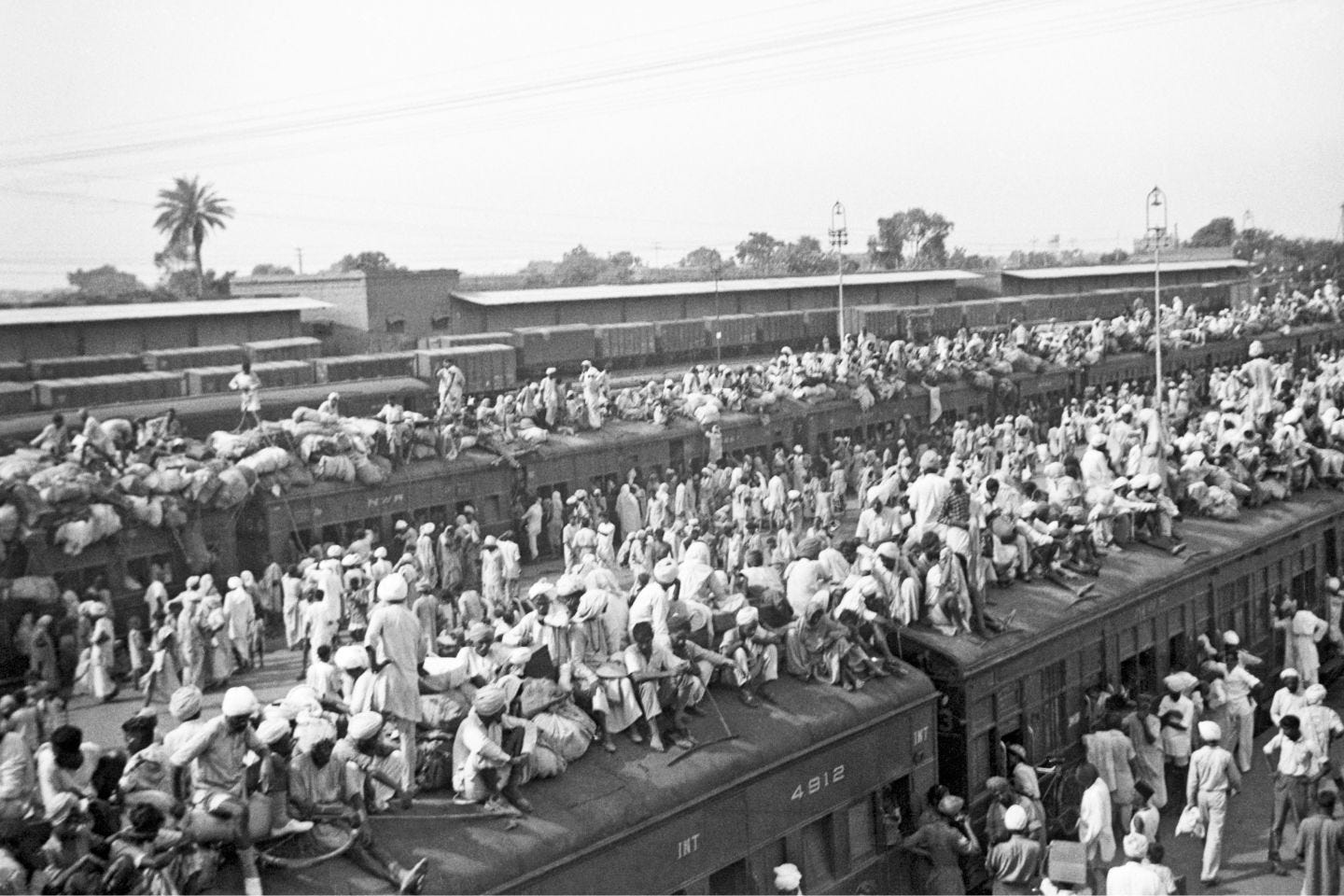 The world is a network. Obvious enough. Social networks, financial networks, news networks, multinational corporations.
The world is a network. Obvious enough. Social networks, financial networks, news networks, multinational corporations.
The world has always been a network. Less obvious. But tribes, trade, cultures, religions, diseases are all complex, interacting networks of individuals. The “your god/my god” argument is merely the forebear of “my politics/your politics”.
The basic rules of the networks haven’t changed. Least obvious. What has changed is how connected the average person has become to much larger networks, and how that affects the behaviour and responsiveness of the network.
LBazaars and markets have historically served to connect diverse trade networks. Painting by Edwin Lord Weeks
What are networks, and why do they matter?
This article aims to look at two defining features of modern Indian democracy: nationalism and polarization, and place them in a broader historical framework of networks. But first — what is a network? Simply put, it’s a group of people (nodes) who are connected to each other by “edges”.
Networks of trade transferred culture, science, and disease across the Old Eurasian World for millennia. Geography and climate often made some parts of the network better at some things than the rest — but as long as it was connected, ideas and technology could always flow from one end to the other. A prime example is the Hindu-Arabic numeric system.
 The Silk Road is an excellent example of an ancient network. Think of each city as a node, and the paths between them as edges. Source: Wikimedia Commons
The Silk Road is an excellent example of an ancient network. Think of each city as a node, and the paths between them as edges. Source: Wikimedia Commons
However, every now and then, some parts of the network would consciously retreat to isolation and limit connectivity to other nodes (India and China) while other parts of the network would go out and try to encounter and assimilate entirely new ones (Europe colonizing the New World). When these gigantic, separately interconnected networks came back into contact, the results were a disastrous formation of an entirely new global network — the Aztecs were wiped out by Spanish smallpox, India crushed by British firepower, China humiliated in the Opium Wars.
Indian History in Networks
Inthe 16th century CE, a Timurid prince, Babur, set his sights on India’s moribund Delhi Sultanate. Babur was deeply integrated by territory, by culture, and by religion into the global Islamic “gunpowder empire” network — a group of Muslim states, which had used their connections to European trade networks to create a new status quo in the Middle East, from extinguishing the Byzantine Empire in 1453 to reuniting Persia under Shi’a Islam. India, meanwhile, was connected to these global networks primarily through trade of its finished goods, and primarily via the states of the Southern coasts.
The Delhi Sultanate was a land-bound power, riven by aristocratic rivalry, and thus made up a very loosely-bound network within itself and in relation to other Indian states. So when one particular node — Delhi’s governor of Punjab — reached out to Babur, the two networks, one with field artillery, the other without, collided at the Battle of Panipat in 1526. This led to the formation of the Mughal Empire and pulled India into a new era of global connectivity. A new network rapidly formed out of the collision of the two, as the Mughals imported Persianate, Ottoman, and Central Asian influences and trade relations.
How was the “Mughal India” network, consolidated under Emperor Akbar, so much more stable than the “Delhi Sultanate” network? The answer lies in a concept known as a “bridge”.
Let’s say a gentleman known as Sancho Panza has a degree in sheep-rearing and in farming. He joins up as a consultant at his village, where he acts as a liaison between the shepherds and farmers. He’s not a farmer and none of the farmers see him as one of themselves. He’s not a shepherd, and shepherds don’t see him as one of themselves. However, Sancho controls all communication between these two networks — putting him in a position of considerable power. If Sancho manages to get these networks to communicate with each other directly, it can be beneficial for the village, but he’ll no longer be the only bridge. If Sancho keeps the networks as far away from each other as possible, it’ll strengthen his position but weaken the village.
Akbar inaugurated a grand experiment of the former style of “bridging”. As a wealthy Muslim ruler, he could patronize the foremost intellectuals of the day from across the world, and keep a strong grip on his primarily Muslim generals and armies. Yet, by adopting Hindu forms of rulership- such as appearing every morning at his balcony for his Hindu subjects to pray to him- he was able to win their loyalty too. As both these very disparate networks owed allegiance to the Mughal throne, they began to interact with each other — sometimes with imperial encouragement (such as with Persian translations of the Ramayana), sometimes of their own volition (such as Indian Sufism and the worship of saints).
Fast-forward to 1857, the end of the First War of Indian Independence. The British, having brutally put down the largest armed insurrection against their rule they ever faced in the subcontinent, unceremoniously end the nearly 350-year rule of the Mughal dynasty, and adopt a scrupulous policy of “Divide and Rule” to preclude any further Hindu-Muslim unity, and thus stabilize their rule. This is analogous to Sancho’s second strategy — maximizing his advantage by ensuring the two networks do not have their own interactions or “bridges” excluding him. So the British keep the networks as far apart as possible, beginning the idea that Hindus and Muslims cannot live together. And as the British Empire itself comes to a close, the rift is widened to the point where the networks are so far apart, with so few bridges, that they tear apart, and Pakistan and India are formed.
“I was right, wasn’t I, Humphrey, old horse? The savages need us to save them from each other!”
Moving Forward, not Backward
Network theory provides compelling insights into a nation divided. It is an interesting theoretical standpoint, free from value judgments of inferiority and superiority that contribute to political bias.
A nuanced study and understanding of how the subcontinent’s networks have interacted historically, and how they interact today, can ultimately lead to more efficient democratic and governance practices.
In a world that is constantly shocked and disrupted by new technologies, India needs to be open to newer ways of coming to terms with who we are as a radically networked 21st century nation, alongside a culture as old as any on Earth. Later articles in this series will further develop the application of network theory to modern political movements. I’ve also written about India’s recent #NotInMyName protests against lynchings here.
If you found this article enlightening, why not spread the light? Recommend and share!


No comments:
Post a Comment